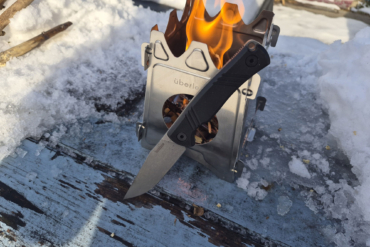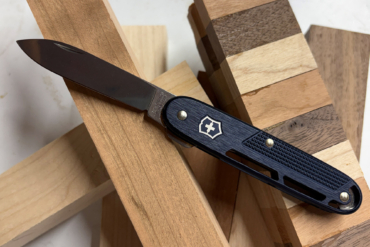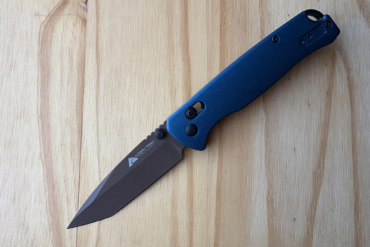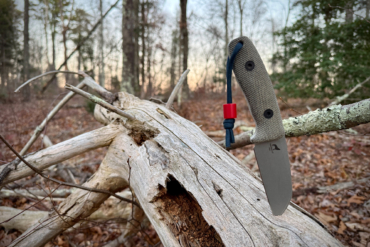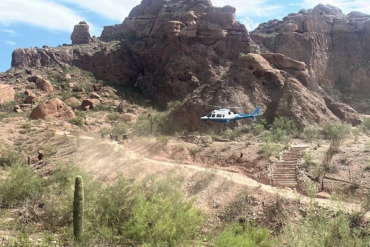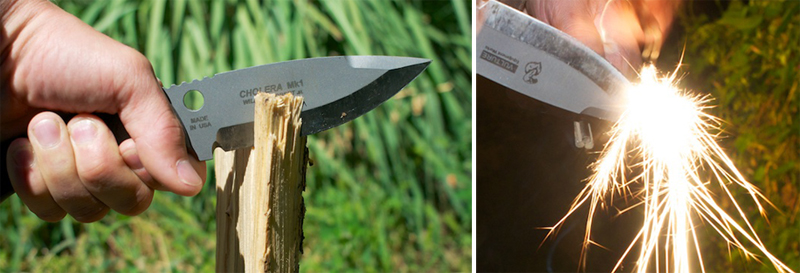
Cholera is something you want to avoid at all costs. But not in the case of this knife from Vulture Equipment Works, which is called the Cholera because the bacteria can actually live in the belly of a vulture.
Badass? Yes, just like this knife.
The Cholera is a modified Japanese gyuto knife, literally a “beef knife” in the language. And yes, it’ll cut up hunks of meat like a champ.

But I was more interested in how it would handle being beaten through logs, hacked through branches like a machete and adjusting the coals of a fire. So that’s what I did, dragging the knife on several trips from Alaska to the Colorado Rockies this summer. I even used it to pry apart the brake calipers of a mountain bike when I couldn’t find an appropriate screw driver — definite abuse of a blade and not recommended.
Turns out, this knife took all my abuse very well.
I spoke with William Egbert Jr., the founder of Vulture and the designer of the Cholera. “I wanted something I could carry to Panama and then come home and use to hunt Elk,” he said. “It had to be stylish and usable. It had to be a tool, and it had to do 90 percent of everything.”
From what I’ve gathered during my months of testing, it does. This is one of the best all-around survival knives I’ve used. But it’s not without compromises.
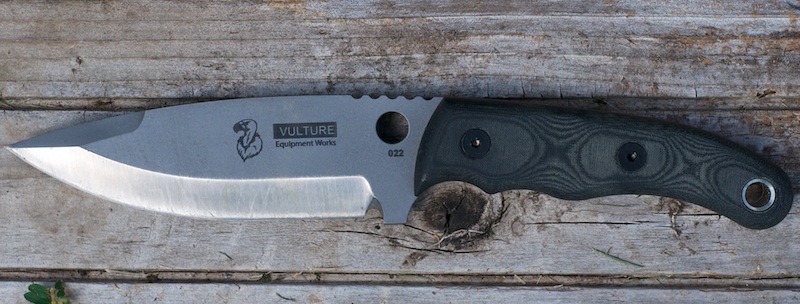
The Gear: Vulture Equipment Works Cholera ($190)
Who’s It For: Those who know a quality knife and how to use (and care for) it. This pricy blade is not a great choice for daily carry (just too much knife) or as an entry into survival blades (it requires regular maintenance and sharpening).
Who Should Buy It: Experienced outdoors enthusiasts including hikers, hunters and explorers who need or want a knife that can do it all and will stand up to the rigors of survival situations. The Cholera was designed with special forces applications in mind and should handle pretty much any civilian use with aplomb.
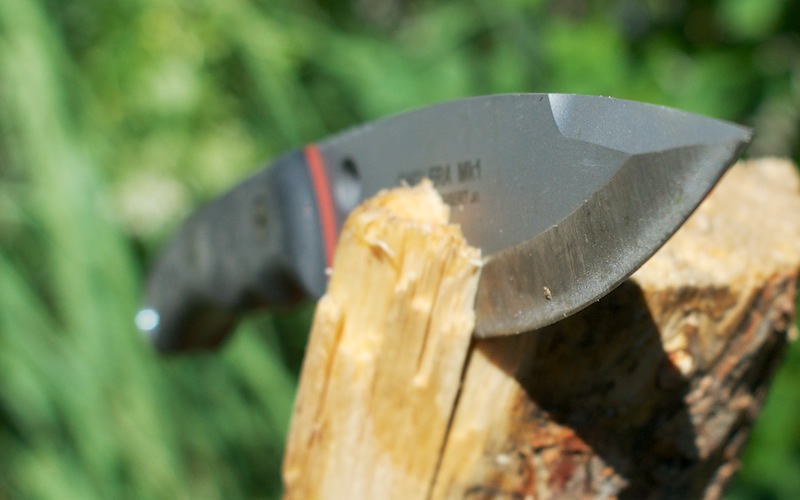
Blade: I beat the heck out of this 5.5” blade, batoning it through logs and splitting firewood. It barely blinked. I think I heard it say: “Is that all you’ve got, nancy boy.”
The Cholera blade and tang (which extends through the handle) is made of 3/16-inch-thick heat-treated 1095 high-carbon steel. This choice in steel is a bit controversial in the world of high-end knives as, left untreated or poorly stored, is prone to corrosion. Egbert said he believes it is the absolute best choice for this knife. The steel is protected with a Cerakote finish (an anti-corrosive coating sometimes applied to firearm metals) to dissuade rust.
“It takes an edge from 18 to 25 degrees and you can sharpen it easily with glass or a rod,” he said. I tend to agree that 1095 is a great choice for this blade so long as the user doesn’t mind a little maintenance, like oiling the blade for storage after hard use.
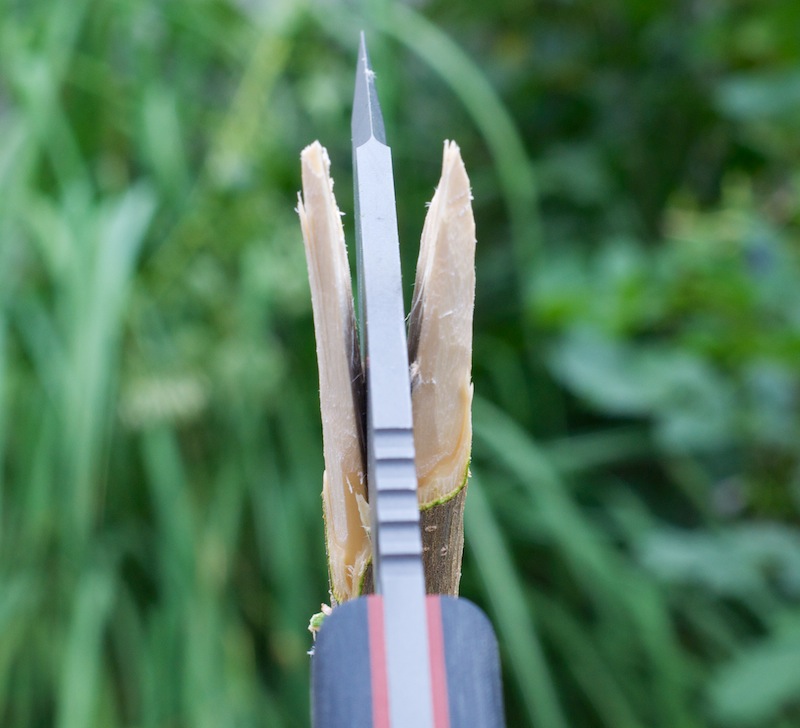
The modified scandi grind is a wide flat bevel that runs to the edge of the blade, providing a keen edge that can be made razor sharp. The “false edge” on top thins the blade for detail work about an inch from the tip. While I really like the shape of the blade for just that reason, it has been criticized as adding weakness to the tip. Personally, it seems very strong and should hold up to hard use and even a little abuse just fine.

Handle: The handle is ergonomically shaped from grippy, tough linen Micarta (a branded thermoplastic that provides a high-friction, durable handle material) sandwiched around the blade steel. Like the rest of the knife, to appreciate the nuances you have to hold it in your hand. The nicely shaped Micarta feels much like wood, except with grippier surface texture and sits perfectly in the palm of the hand.
Designed with three grips in mind (standard with thumb wrapped or on back of blade; pointed down with edge away from body; or with edge toward body) the knife sits well in the hand regardless of which grip is chosen.
For most work, and held in a standard grip, the knife just doesn’t slip.
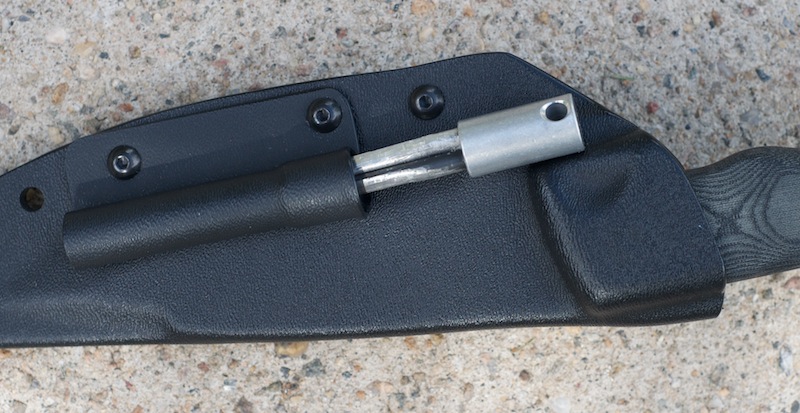
Sheath: Kydex formed sheath clips on a belt or other strap and is MOLLE compatible. The sheath spins on the clip for horizontal or upside-down carry. The clip-on sheath seems secure and very durable and also carries the included ferrocerium/phosphorus rods.
Made In: ‘Merica! Egbert is very proud that every bit of the Cholera is made in the USA, enough so that each numbered blade carries his name and doesn’t leave the factory without his blessing and signature.
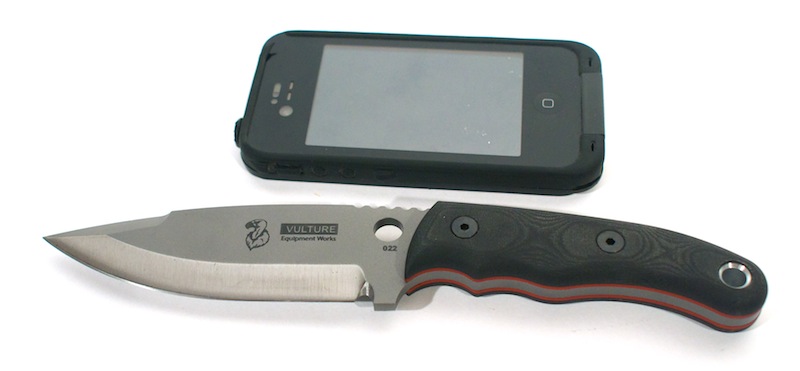
Where To Test It: Outside. Inside. In a war zone. Hunting elk. Slicing tomatoes. Skinning deer. Cutting wood. “It’s designed to do everything,” Egbert said.
Flaw: This isn’t a knife for beginners. While 1095 is a good steel and holds an edge well, you must maintain it more than harder, more corrosion-resistant metals. It’s also big and heavy, 12.4 ounces on my home scale in the sheath, so probably not a great choice if you are counting grams.
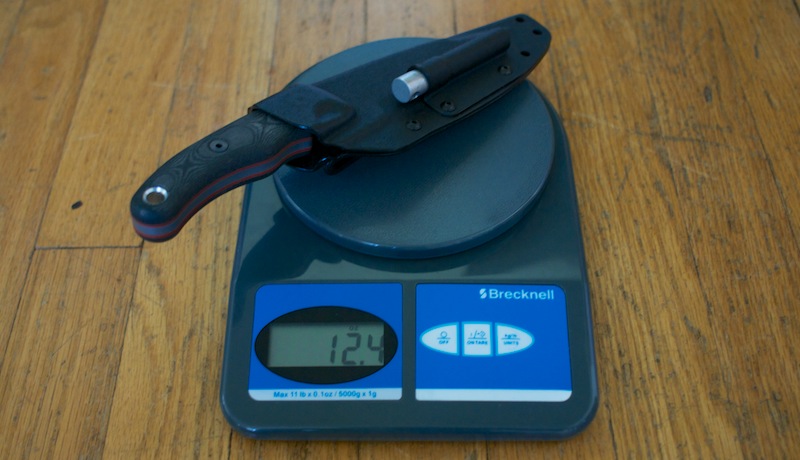
As with any jack-of-all-trades design, it isn’t a specialist and isn’t always the best choice for a given job. Want a knife ONLY for cleaning game? Get a Havlon with replaceable blades or a thinner-bladed skinner. Want to fillet a bunch of fish? Get a fillet knife.
But if you want a single tool that will do pretty much any task asked of knives, this is a good place to start.
Awesome! Some serious thought (15 years worth) has been put into the design of the Cholera and you will know it when you hold one in your hands. It is highly refined and the details, like a curved bevel at the back of the blade to keep your hand from sliding down over the edge, or the just-right shape of the handle, will make me reach for this knife over several others.
The Cholera ships with a fire striker made of one ferrocerium rod and two phosphorous rods attached at the base. The striker works great, and I’ve started a few fires with it. The addition of phosphorous is a good idea that helps a fire take off once it takes a spark.
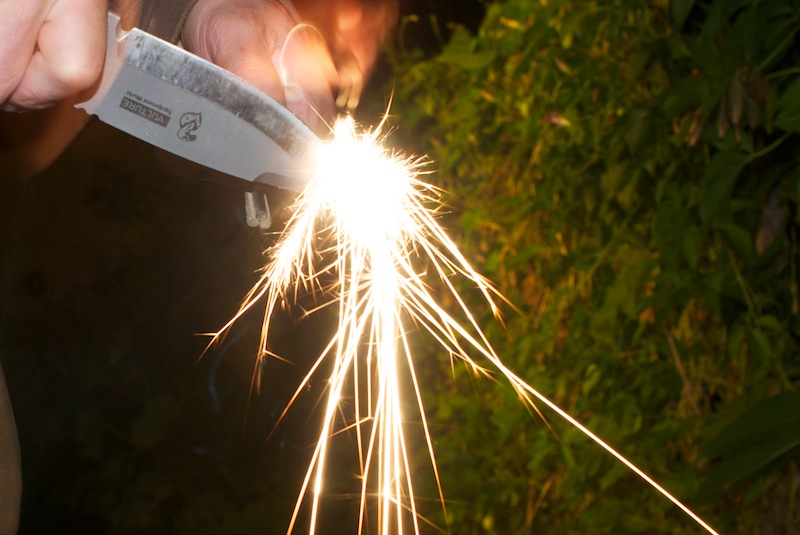
Boring But Important: Heat treated 1095 high carbon alloy steel; modified scandi grind; serial numbered; laser etched logo; acid wash finish; dark linen Micarta handle; double red liner; Kydex sheath with rotating belt attachment; overall 10”; blade length 5.5”; blade thickness 3/16”; ferrocerium/magnesium starter with holder; Made in the USA.
First Impressions: Big and badass, this is a tool that will do what you need done.
Who Should Buy It: Need a survival knife and don’t mind giving it a little TLC when not in use? This is a good choice. Go get yourself some Cholera, the knife, not the disease. You won’t be disappointed.
Contact Brand/More Beta: Vulture Equipment Works
—Sean McCoy is managing editor at GearJunkie. Our “First Look” column highlights new gear arrivals at GearJunkie.com. Photos © Monopoint Media LLC.


